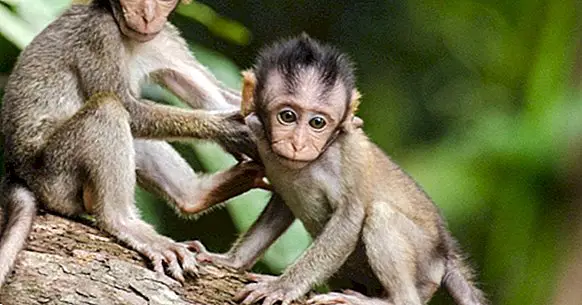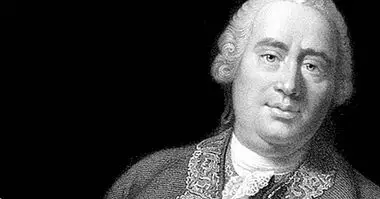What is Ethology and what is its object of study?
It is not uncommon for different branches of knowledge to cross to create hybrid disciplines. This is the case of Ethology, a branch of biology that deals with the how and why of animal behavior .
It is impossible to understand human behavior without first being familiar with the behavior of animals, for this reason the study of ethology is fundamental in the training of any psychologist who wants to have a holistic vision of human development.
What does ethology consist of?
Ethology emerged as a different discipline in the decade of the 20s of the last century through the efforts of Konrad Lorenz, Karl von Frisch and Niko Tinbergen, who in 1973 received the Nobel Prize in Physiology or Medicine jointly for their contributions to the study of behavior. They took influences from the founding work of, among others, the ornithologist Oskar Heinroth and the student of the ants William Morton Wheeler, who popularized the term "ethology" in a 1902 article.
Ethologists use comparative methodology to study behaviors such as cooperation, parental investment, conflict , sexual selection, and aggression in various species. Today, ethology as a label has been progressively replaced by others such as behavioral ecology or evolutionary psychology. These areas of knowledge tend to put more emphasis on social relationships instead of the individual; however, they still maintain the tradition of fieldwork and are based on the theory of evolution.
The students of the ethology almost always work in the own means of the animal to carry out experimental investigations based on hypotheses. The combination between laboratory and field work reflects a very important underlying concept of the discipline: that behavior is adaptive, that is, that it allows an animal to better fit in its environment and is more likely to survive and reproduce.
The ethology method
Ethologists, like most scientists, generate hypotheses about animal behavior. To test them empirically, Tinbergen proposes that any researcher should bear in mind the following four questions when formulating hypotheses if a complete explanation of the phenomenon is to be provided:
1. Function
The researcher must ask how the behavior is adaptive . Which aspects facilitate their survival and, therefore, that is more likely to pass their genes to the next generation.
2. Mechanism
The researcher has to answer the question of what stimulus or stimuli triggers the behavior to study . Also, if the response has been modified by some recent learning.
3. Development
How does this behavior change throughout the life cycle of the animal? The experimenter must elucidate if there are early experiences that are necessary for the animal to acquire this behavior.
4. History of evolution
The researcher must find the answer to whether the behavior under study resembles in any way some of the behavior exhibited by other species. In this sense, must also be formulated how the behavior may have evolved through the development of the species or group itself .
Key concepts of ethology
One of the fundamental ideas of ethology is the existence of modal action patterns (MAP) . MAPs are stereotyped behaviors that occur in a rigid sequence, in situations determined in response to a specific stimulus. A kind of "behavioral reflex" that happens inevitably and always in the same way.
For example: the goose, whenever it sees one of its eggs outside the nest, will roll the egg back to its place with the beak. If we removed the egg, the goose would continue to roll an imaginary egg. Also, try to move any object with a shape similar to the egg as a golf ball, a knob or even eggs too big to have put a goose. You can not avoid doing it reflexively because PAM is imbued in your brain like a circuit.
Behavior as adaptation
Since ethology is born as a branch of biology, ethologists are very concerned with the evolution of behavior in terms of the theory of natural selection . It is important to keep in mind that this approach is purely speculative. It is not possible to find fossilized behaviors nor can we examine geological data to locate it throughout history.
The most concrete evidence about the theory that behavior is evolving is limited to small instances of evolution that occur within a species, but we have never been direct witnesses of a behavioral change between chained species. There is a certain level of extrapolation when ethology deals with these issues.
Animals use PAMs to communicate
Above we have talked about what ethology calls patterns of modal action and how it resembles a reflex. Once the MAPs have been identified, they can be compared from species to species to compare similarities and differences in similar behaviors.
A well-known example of how PAMs intervene in animal communication are bees. These fascinating insects communicate with each other through aerial dances in the form of eight. When dancing, taking the "axis of the eight and the sun as points of reference, they form an angle that indicates to the other bees of the colony where there is nectar, and its duration indicates how far it is.
The imprint is a type of learning
A related concept of ethology is that of imprinting. This is a type of special learning that occurs during a critical period, outside of which it can no longer occur, during which the young animal will learn some pattern of social behavior toward its parents or siblings. Learning can not occur outside of this critical period.
For example, Konrad Lorenz observed that since they are born, birds such as ducks, geese and swans are able to identify their parents and follow them spontaneously . He demonstrated how the ducklings born in an incubator could form an imprint with the first stimulus they perceived at birth, for example, Lorenz's own footwear.



















